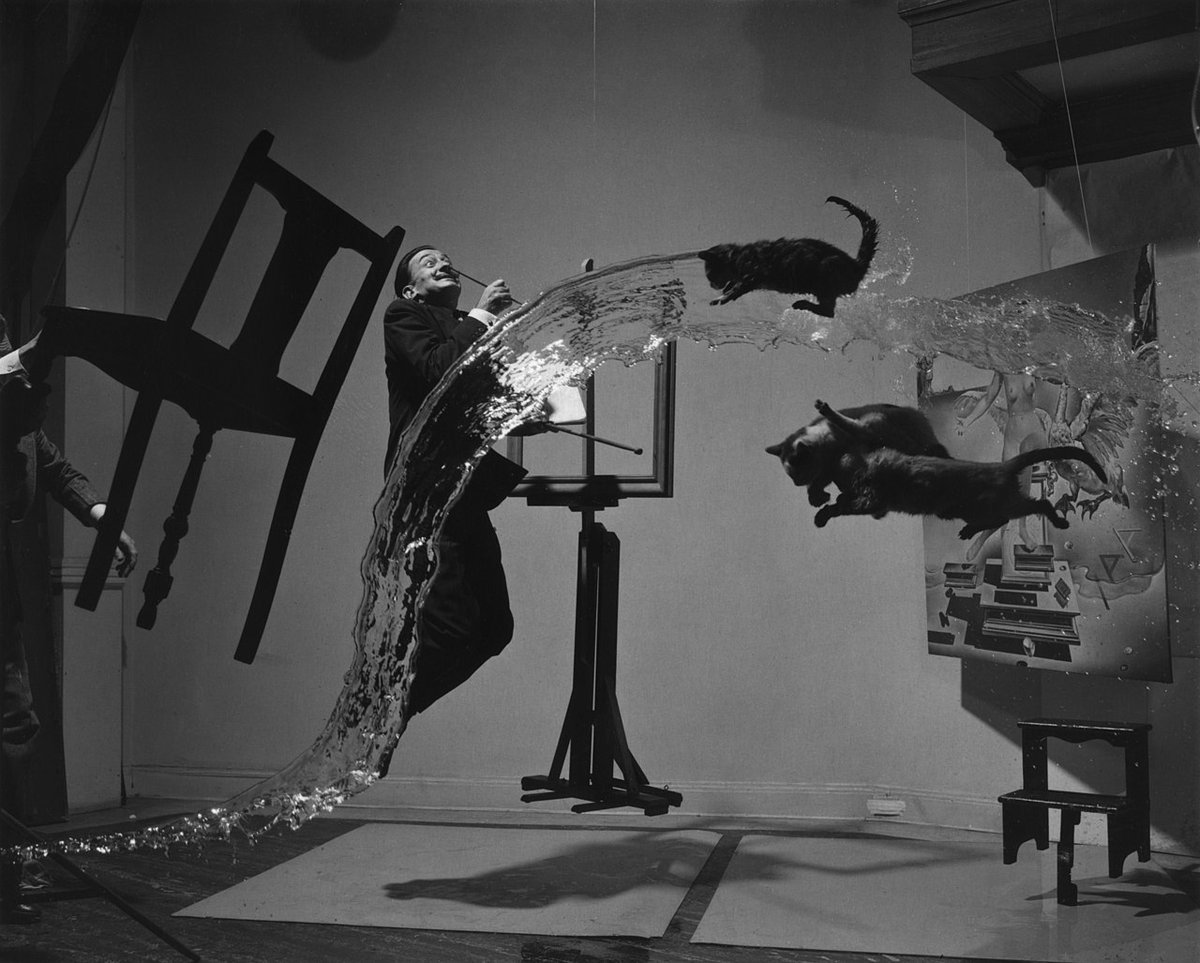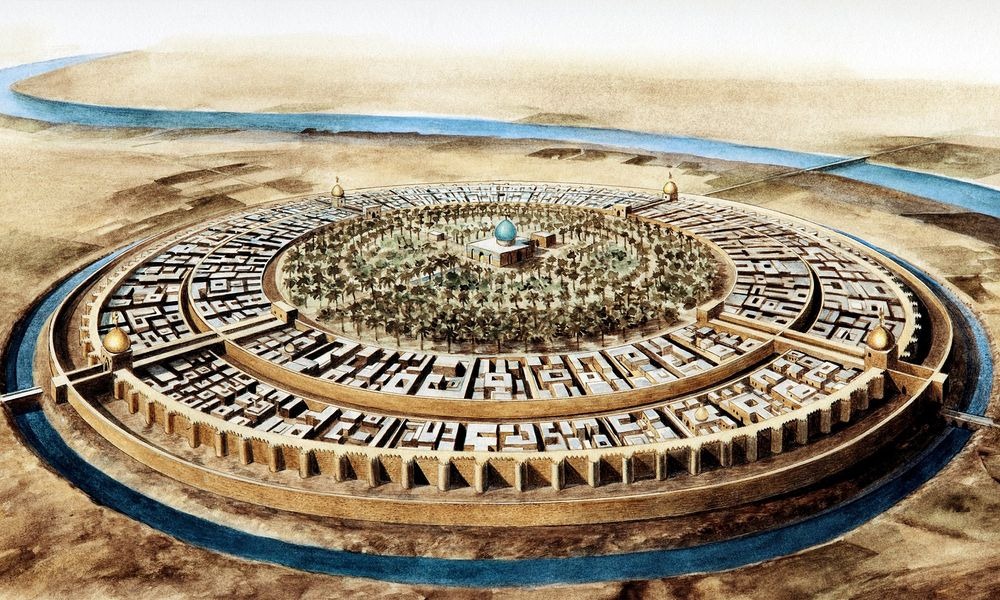Salvador Domingo Felipe Jacinto Dalí i Domènech was born in Catalunya in 1904.
Two events shaped his youth: the death of an older brother he never knew, also called Salvador, and the death of his mother when Dalí was just sixteen.
They stayed with him throughout his life.
Two events shaped his youth: the death of an older brother he never knew, also called Salvador, and the death of his mother when Dalí was just sixteen.
They stayed with him throughout his life.

It was clear, even as a child, that Dalí was a prodigiously talented artist — this painting was made in 1913, when he was only nine years old.
This sort of art, influenced by Post-Impressionism, dominated his teenage years... just like every other young artist in Europe.
This sort of art, influenced by Post-Impressionism, dominated his teenage years... just like every other young artist in Europe.

But in the 1920s Dalí was introduced to Cubism and quickly adopted its fragmented, geometric style.
He even studied at the Academy of Fine Arts in Madrid — where his talent for figurative rather than abstract painting became clear — but left before finishing his studies.
He even studied at the Academy of Fine Arts in Madrid — where his talent for figurative rather than abstract painting became clear — but left before finishing his studies.

And everything changed in the late 1920s when he visited Pablo Picasso in Paris and was introduced to the Surrealists, led by André Breton.
They radically reshaped his art — which soon took on its now recognisable form — and he became the most famous member of their group.
They radically reshaped his art — which soon took on its now recognisable form — and he became the most famous member of their group.

The Surrealists had emerged in the aftermath of the First World War, in an era shattered by its primordial horrors.
Inspired by Giorgio de Chirico in Italy, who even before the war had starting exploring dreams, the Surrealists turned to the subconscious for inspiration...
Inspired by Giorgio de Chirico in Italy, who even before the war had starting exploring dreams, the Surrealists turned to the subconscious for inspiration...

The result was a rejection not only of the society that had caused the war but of the external, material, "real" world entirely.
Whereas art for so long had look outwards — whether at the ideal or mundane — the Surrealists journeyed inwards.
Whereas art for so long had look outwards — whether at the ideal or mundane — the Surrealists journeyed inwards.

The subconscious, the nightmarish, the phantasmagorical, the impossible... these were the forces channelled by Dalí and other Surrealists like René Magritte.
Subverting expectations, playing with illusions, disturbing, provoking, and defying simple explanation.
Subverting expectations, playing with illusions, disturbing, provoking, and defying simple explanation.

In 1931 Dalí created The Persistence of Memory, his most famous painting and the most famous work of Surrealism, apparently inspired by the sight of a camembert melting in the sun.
Art was coming closer than ever to visualising the strangeness of our dreams.
Art was coming closer than ever to visualising the strangeness of our dreams.

It isn't a surprise to learn that Dalí was intrigued and influenced by the theories of the psychologist Sigmund Freud.
In "Average Atmospherocephalic Bureaucrat in the Act of Milking a Cranial Harp" — a typically bizarre Dalían title — he addresses his feelings about his father.
In "Average Atmospherocephalic Bureaucrat in the Act of Milking a Cranial Harp" — a typically bizarre Dalían title — he addresses his feelings about his father.

This is a key difference between Abstract Art — which makes no attempt at being a recognisable representation of the world — and Surrealism.
Surrealism, by using the traditional methods of representing reality, is unsettling *because* it feels familiar.
Reality but different.
Surrealism, by using the traditional methods of representing reality, is unsettling *because* it feels familiar.
Reality but different.

Dalí's greatest gift might be his draughtsmanship, his technical mastery — it is up there with the great masters Dalí once studied at the Prado in Madrid
Every detail is minutely and exquisitely crafted, creating a strange, stylised photorealism.
Every detail is minutely and exquisitely crafted, creating a strange, stylised photorealism.

Dalí had a keen sense for powerful, memorable, and disturbing imagery — and he presented it with a clarity not unlike the artists of the Renaissance.
A peculiar, unsettling, haunting mix.
His visual language was compelling then and remains unforgettable even now.
A peculiar, unsettling, haunting mix.
His visual language was compelling then and remains unforgettable even now.

Dalí's relationship with the Surrealists was strained, not least because he believed art could be apolitical.
His contemporaries, horrified by the rise of fascism, disagreed.
What George Orwell later wrote about Dalí explains well their problem with his position.


His contemporaries, horrified by the rise of fascism, disagreed.
What George Orwell later wrote about Dalí explains well their problem with his position.


During WWII Dalí and his wife fled France for America; after it was over they returned to Europe.
And in 1954 he painted The Disintegration of the Persistence of Memory.
A return to his earlier masterpiece — only, this time, everything was falling apart.
And in 1954 he painted The Disintegration of the Persistence of Memory.
A return to his earlier masterpiece — only, this time, everything was falling apart.

Surrealism may have emerged in the 1920s, but its instincts are far older.
The Garden of Earthly Delights, painted by Hieronymus Bosch in 1515, is equally interested in the stranger parts of human psychology and readily embraces bizarre, disturbing, impossible imagery.
The Garden of Earthly Delights, painted by Hieronymus Bosch in 1515, is equally interested in the stranger parts of human psychology and readily embraces bizarre, disturbing, impossible imagery.

There are also the strange portraits made by Giuseppe Arcimboldo in the 16th century, composed of everything from fish to fire.
Not so different from Dalí's penchant for constructing faces from other objects and his delight in the grotesque, the illusionary, and even the comical.

Not so different from Dalí's penchant for constructing faces from other objects and his delight in the grotesque, the illusionary, and even the comical.


These older paintings tell us something about Surrealism — all art, inward-looking or not, explores how human psychology responds to the outside world.
For Bosch it might have been plagues, for Arcimboldo new philosophies, and for Dalí it was modern science and technology.
For Bosch it might have been plagues, for Arcimboldo new philosophies, and for Dalí it was modern science and technology.

The Disintegration of the Persistence of Memory was part of his "nuclear mysticism" phase, inspired by atomic physics, Einstein's theories, and the tension between science and religion.
Disintegration pervades his postwar art — Dalí's inner world reflecting the outer.


Disintegration pervades his postwar art — Dalí's inner world reflecting the outer.


When Dalí died in 1989 he had become one of the most famous, influential, and celebrated artists of his time — he had lived to see his radical style conquer the world.
And his influence is still pervasive, inspiring the very name of DALL-E, among other things.
And his influence is still pervasive, inspiring the very name of DALL-E, among other things.

Though he is now seen as a creative genius, one whose art — even if strange — is far from controversial, that was not always the case.
Once upon a time his work was, like all the avant-garde outsiders of the 1920s and 1930s, nothing short of scandalous.
Once upon a time his work was, like all the avant-garde outsiders of the 1920s and 1930s, nothing short of scandalous.

Dalí the man was also deeply controversial, not only for his political ambivalence but for his personality, his behaviour, and the things he seemed to promote.
In 1942 he published an autobiography and George Orwell reviewed it two years later.
Here's what he had to say:
In 1942 he published an autobiography and George Orwell reviewed it two years later.
Here's what he had to say:

Orwell was personally digusted by Dalí but still recognised his extraordinary talent.
And even though Orwell, who fought in the Spanish Civil War, had reason to criticise Dalí's politics, he refused to condemn him and argued that Dalí's success raised important social questions.
And even though Orwell, who fought in the Spanish Civil War, had reason to criticise Dalí's politics, he refused to condemn him and argued that Dalí's success raised important social questions.

Orwell was unimpressed both by those who praised Dalí uncritically and those who rejected him at face-value.
Above all Orwell was interested in the relationship between art and morals, between art and artist (whether they can be separated), and saw Dalí as a perfect case study.
Above all Orwell was interested in the relationship between art and morals, between art and artist (whether they can be separated), and saw Dalí as a perfect case study.

His controversial reputation has since faded and Salvador Dalí has now become a byword for creative genius.
He was one of the most technically gifted painters in history, and his dreamworlds remain unlike anything else.
But the question remains: can art and artist be separated?
He was one of the most technically gifted painters in history, and his dreamworlds remain unlike anything else.
But the question remains: can art and artist be separated?

• • •
Missing some Tweet in this thread? You can try to
force a refresh

























